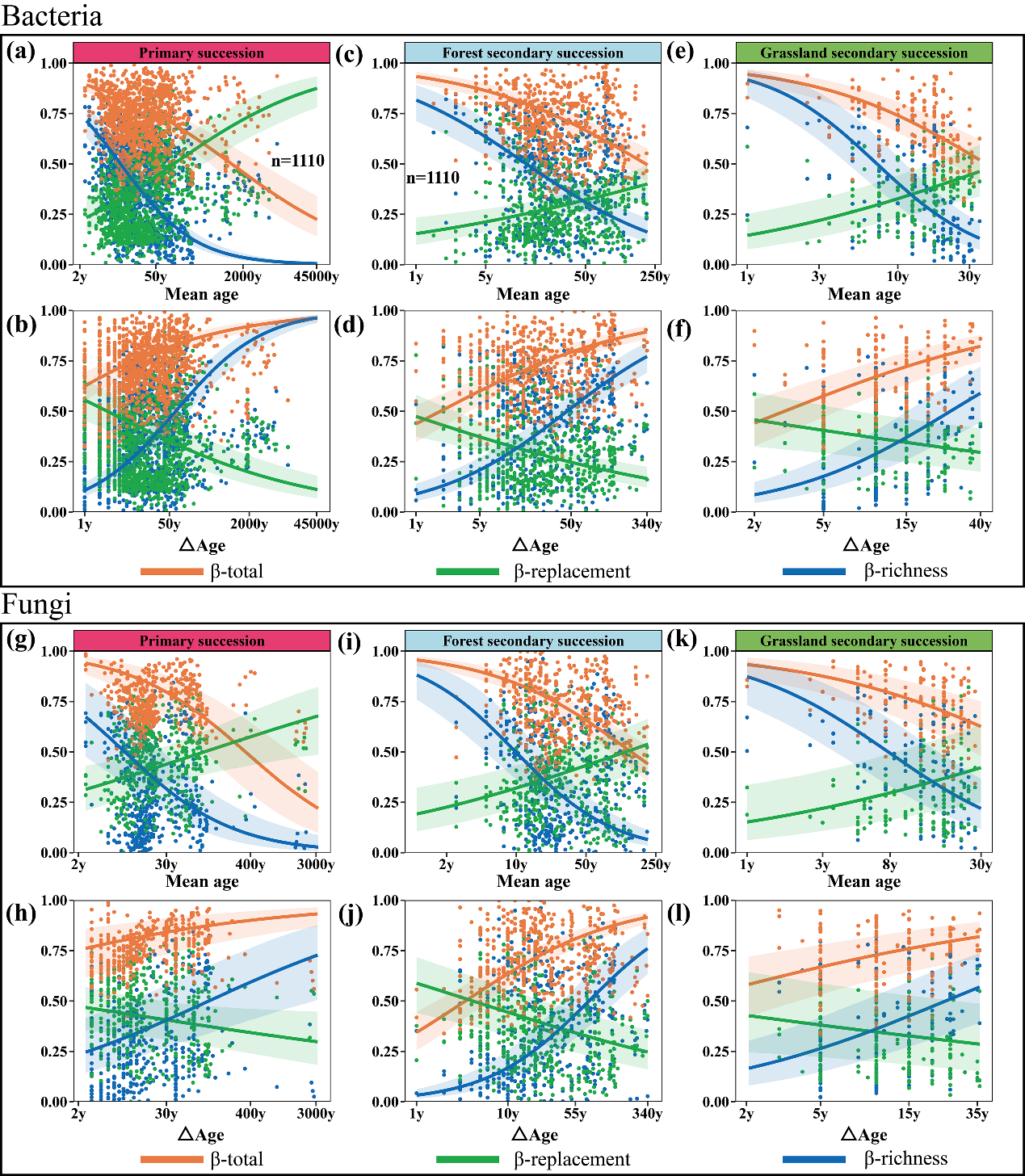"The complexity and diversity of soil microbes have made it extremely difficult to identify their global successional patterns and the factors driving them," said Prof. ZHANG Kerong from the Wuhan Botanical Garden (WBG) of the Chinese Academy of Sciences (CAS).
Now, a research team from WBG, led by Prof. ZHANG, has found evidence confirming the universality of microbial community convergence during succession, regardless of the type of succession or initial environmental conditions. Their findings were recently published in Global Change Biology.
The researchers analyzed raw sequencing data from over 5,000 soil samples collected worldwide, utilizing a standardized bioinformatics pipeline. Their goal was to track microbial succession following both natural disturbances and human-induced ones.
The results revealed that despite variations in succession type and starting conditions, soil microbial communities consistently exhibited a strong tendency toward convergence. This convergence is measured by a steady decrease in "compositional dissimilarity" between microbial groups as succession progresses. The team further identified that this convergent process is driven by directional species replacement, a shift directly tied to changes in soil properties over time.
Furthermore, the researchers discovered that the key mechanisms shaping microbial succession are dynamic over time. In the early stages of succession, the β-diversity of soil microbes (a metric that quantifies compositional dissimilarity between communities) is mainly driven by the addition of new species. As succession advances, however, β-diversity becomes increasingly governed by species replacement.
This study addresses a gap in existing knowledge about soil microbial succession, validating a core prediction of classical macroecological models: the universality of community convergence, the researchers noted.
This work was supported by the National Natural Science Foundation of China and the Youth Innovation Promotion Association of CAS.

Change patterns of β-diversity and its components of bacterial and fungal communities over succession. (Image by WBG)






